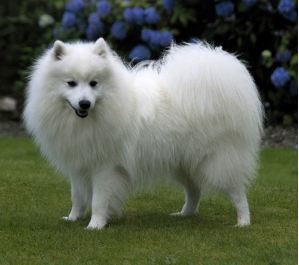Most dogs are known for their sweet and affectionate nature; some of them are fond of playing with their families and other dogs. This behavior is not something new to dogs. However, there are some breeds that are just on a whole new level of being playful: introducing the Japanese Spitz.
Just by hearing its name, the Japanese Spitz might already ring a bell to some of us since this dog has a rich part in the history of dogdom. Similar to other breeds that originated in Japan, this dog also showcases its diverse features that are sure to capture the hearts of many dog lovers; it is small and adorable, mainly because of its beautiful coat. Furthermore, it is highly affectionate, always making sure to put a smile on the face of its owner.
If you are a dog lover that is looking for the perfect family companion, the Japanese Spitz is one breed that you should consider.
Origins of the Japanese Spitz
Unlike other spitz-type breeds, the Japanese Spitz only existed during the early 20th century. We can trace its origins to the 1920s, wherein historians speculate that the breed came from the German Spitz; it was then later on introduced to Japan. Despite the greatness of the breed, there is no concrete record about its history; one factor is that its historical records were all destroyed in World War II.
Interestingly, historians believe that the Japanese Spitz first appeared in the early 20th century during a show in Tokyo. This event made an impact on the popularity of the breed, wherein many people started to recognize its exciting features. Years later, it led to the breed introduction to a foreign land, mainly in Canada, as well as in the United States, Australia, and China.
After years of breeding and reproduction of the Japanese Spitz, its descendants captured the attention of breeders and led to the creation of the Japan Kennel Club in 1948. Today, the Japanese Spitz remains to be an incredible breed that is sure to win over the hearts of many dog lovers worldwide.
Characteristics of the Japanese Spitz
Height: 12 – 15 inches
Weight: 10 – 25 pounds
Life Expectancy: 12 – 14 years
Hypoallergenic: No
As mentioned earlier, the Japanese Spitz is a relatively small dog that is packed with magnificent features. It is a popular toy dog in Japan, which could stand up to fifteen inches tall and weighs up to twenty-five pounds. Its size is combined with an elegant look, making it a lovely dog.
In terms of its appearance, the Japanese Spitz is a breed known for its beautiful, dense coat; it has a distinct white color and is thicker around the neck. Its furry tail curls over its back, showing a clear definition of a comedic dog. The appearance of the Japanese Spitz somehow resembles the appearance of a fox, with two ears pointing up and eyes that express a friendly nature.
Speaking of its nature, the Japanese Spitz also has its reputation as a sweet and affectionate dog. This dog is not just good-looking; it also possesses a soft nature, which is sure to attract dog lovers. It is amicable when it comes to its family but is also highly intelligent; it could quickly identify a threat. Despite the breed’s small body, its keen instincts allow it to work as a watchdog; combined with loyalty and alertness, the Japanese Spitz fits perfectly for the job.
With all of these features, we can say that the Japanese Spitz is a genuinely incredible dog. If you are looking for the ideal family companion that is sure to put a smile on your face, the Japanese Spitz is undoubtedly a breed that you should own.
Caring for the Japanese Spitz
Despite the breed’s elegant and regal appearance, taking care of the Japanese Spitz is not a complicated task. This dog requires a well-balanced diet; good quality dog food works fine, but homemade meals are also acceptable as long as there are approved by your local vet. However, always be mindful of the amount of food you are feeding your dog; proper monitoring of your dog’s calorie intake could avoid the risk of getting overweight, which could lead to other medical problems in the future.

